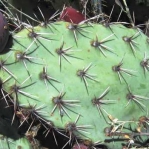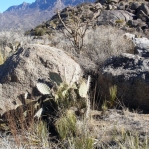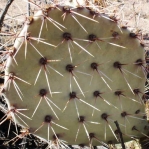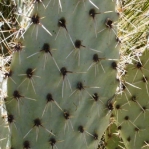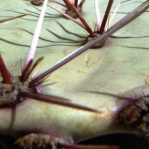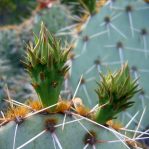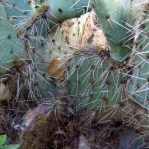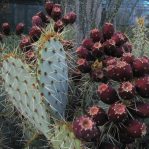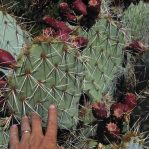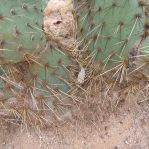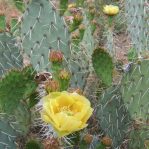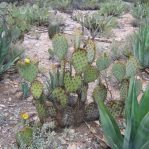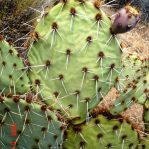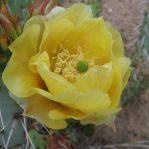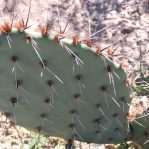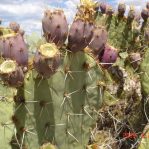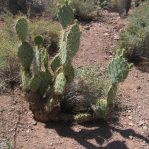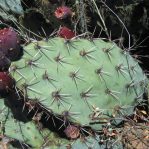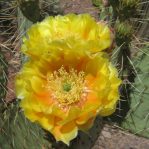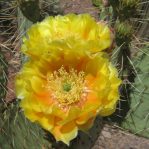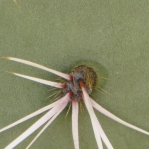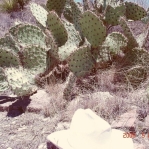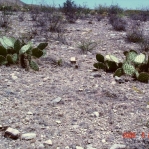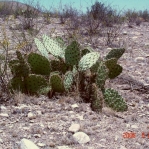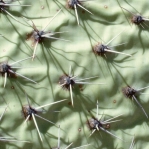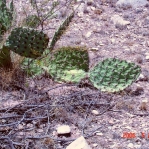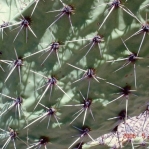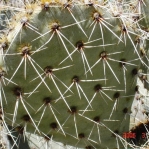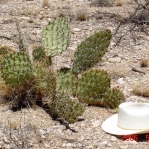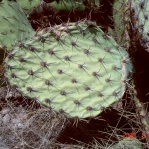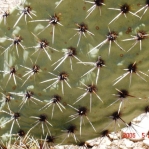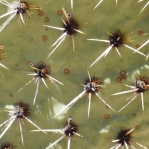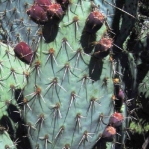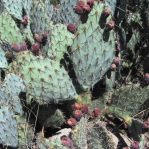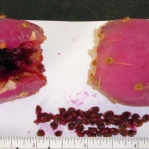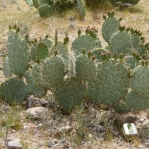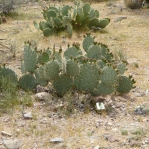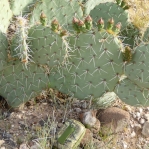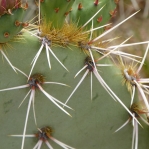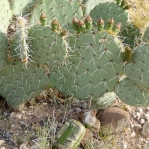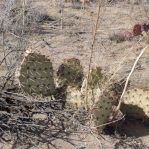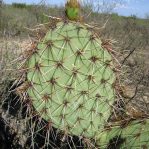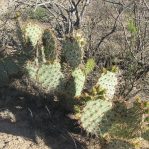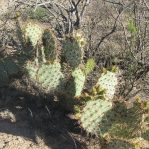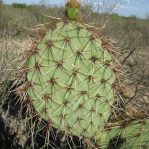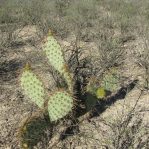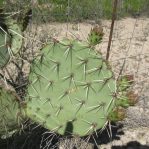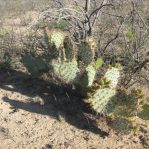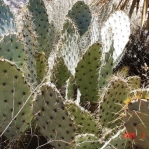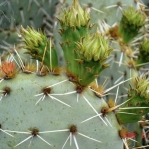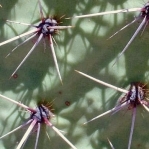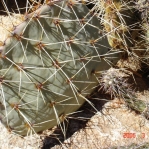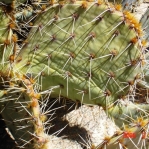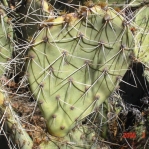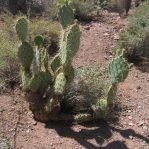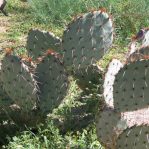
Griffiths, Proceedings of the Biological Society of Washington 27: 24, 1914
Holotype; Isotype; Herbarium; Herbarium; Herbarium; Herbarium (aff O. valida); Herbarium (aff O. valida); Herbarium (aff O. valida); Herbarium (aff O. valida)
Original Description
What is Opuntia valida?
Opuntia valida is a handsome prickly pear cactus found in New Mexico, West Texas, and perhaps Arizona. The spination, areoles, and habit of this cactus are distinctive.
Details
O. valida is related to O. engelmannii. O. valida is erect to ascending, widely radiating branched species, with main limbs ascending or horizontal, and sometimes resting on edge under cultivation, but mostly erect to ascending in natural habitat. Mature plants may be 1 m in height and 2 m wide. The cladodes are obovate [sometimes elongate], large, thick, glaucous, slightly blue-green, very broadly pointed or rounded above, commonly 25 by 32 cm or again 25 by 27 cm. Cladodes may be larger on cultivated plants. Areoles are large and ovate, up to 8 mm. The areoles of this Opuntia are brown when new but darken with age. The glochids are scattered throughout the entire areoles with age, but they may be on the upper part in new growth. Glochids are not numerous. Spines (2-5) diverge in all directions.
Flowers are yellow, the fruit is slender.
Ploidy is unknown.
Other Notes
O. valida may have more elongate pads than O. engelmannii, sometimes rhomboid, especially in New Mexico and Texas specimens. In Arizona, pads may be wide obovate and not particularly elongate. Central spines are more prominent in O. valida than O. engelmannii, up to 3 cm long. O. valida seldom (never?) has radials flat against the pad surface. Older O. valida stems become spinier in age as happens with O. chlorotica chlorotica. Fruit is more slender and typically ripens sooner in O. valida than O. engelmannii. Spines are almost always cream-colored in O. valida with a dark chocolate base; they are more uniform than in the Engelmann Opuntia. Compared to O. engelmannii, O. valida has larger areoles with long stout spreading spines that are angular in cross section. The glochids in face areoles are irregular and mixed in sizes, usually rather long in at least edge areoles. Spines on old stems increase in numbers. See a table comparing O. engelmannii with O. valida.
Typical plants found growing from central New Mexico into the Trans-Pecos typical have grayish / bluish pads and white to cream colored spines with very dark bases, Glochids and even the wool in the areoles are usually dark too. The dark color tends to fade to gray in a year or two). Older trunks or stems near the base of the plant tend to become quite spiny as both glochids and spines tend to increase in number. Fruits are relatively slender, often with some spines in upper areoles that tend to be deciduous. They ripen earlier than in most closely related species, and are usually quite sweet-flavored. Pads tend to be somewhat elongate, often rhomboid (but also commonly obovate), and stout spines tend to be rather long, and are born several per areole; are usually angular or flattened in cross-section.
West from about the Continental Divide, plants tend to be differently colored, with spines averaging a little more slender. They tend to be less bluish, and spines tend to be paler and often a little yellowish. This is a plant of mostly broken terrain in the desert or dry hot slopes of the lower mountains. It is found from the Kingman area and southeastward below the Mogollon Rim, and east to central New Mexico and Trans-Pecos Texas. It’s distribution in Mexico is not well-documented, but it definitely occurs in northern Chihuahua and Sonora.

